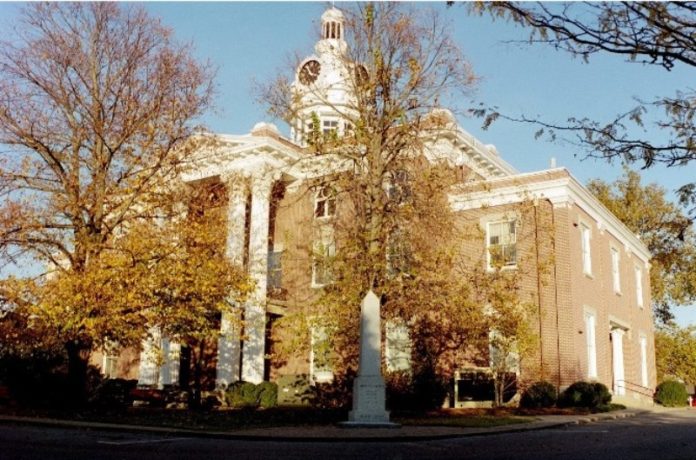
The Rutherford County Courthouse has been central to many of the events that have steered the course of the county since the first one was built of logs in 1812. On the grounds surrounding the current structure are a number of monuments that reflect the rich history the people of this area have experienced. About two years ago, when the Courthouse renovation talks began, plans were made to convert a portion of the building and its grounds into a kind of “living” museum, one that would capture the flow of history using memorials already on the grounds and adding additional artifacts.
“A small display of Rutherford County artifacts already existed in the courthouse,” said Ashley McDonald, Rutherford County Public Information Officer/Program Coordinator. “The plans to expand were two-fold, to educate citizens and visitors on the complete story of Rutherford County and to enhance the tourism experience for history enthusiasts.”
The Office of Information Technology (OIT) will move out of their space on the first floor of the courthouse and into the renovated old judicial building, then their offices, most of the lobby, and the courthouse grounds will become a “working museum.” Completion of the project is yet to be determined, although renovations of the old judicial building are about eight months out. Construction of the museum will begin after OIT moves into their new offices.
Already the courthouse has seen many improvements, but complete renovations will include inside and outside painting; new carpet; new walkways; an ADA compliant entrance near the public restrooms; a new roof; new wallpaper; updated audio/visual equipment and soundproofing in Room 205; new landscaping and sod; irrigation; and a new outdoor lighting package.
The museum will be completed in phases. According to County Mayor Bill Ketron, Phase I of the “working museum” has been completed. It includes five banners with pictures and historical information that are located at the inside entrance way. He further stated that Phase II will consist of a display in the main lobby covering historical events from the Civil War era to World War II. It is currently on hold due to the pandemic. Phase III will cover post-WWII to the arrival of Nissan in Smyrna. The displays will be a combination of banners and actual artifacts.
Dr. Carroll Van West from Middle Tennessee State University has agreed to lead the project. He is also working with Rutherford County Archivist John Lodl. McDonald notes that there are plans to acquire artifacts native to Rutherford County from the Tennessee State Museum. Mayor Ketron has also expressed interest in relocating some of the artifacts from the Bradley Museum and Cultural Center to the Courthouse. The idea is to paint the full history of Rutherford County – the good and the bad. History is not something we can wipe away, museums help us to acknowledge it, learn from it, and hopefully not make the same mistakes again.
As philosopher George Santayana wrote in “Life of Reason: The Phases of Human Progress” in 1905, “Progress, far from consisting in change, depends on retentiveness. When change is absolute there remains no being to improve and no direction is set for possible improvement: and when experience is not retained…infancy is perpetual. Those who cannot remember the past are condemned to repeat it.”
Local historian Shirley Farris Jones calls the Rutherford County courthouse the “heart and soul of the county.” There have been three courthouses constructed on the site. The first that was wood. Then in 1818 (when Murfreesboro serving as the capital of the state of Tennessee, which it did from 1818 until 1826), it became obvious that the old building would not be adequate to serve the meetings of state government. A new building was erected in 1822. The current facility was finished in 1859 and was originally square with columns on the east and west ends. The “wings” were added in the 1950s as a compromise with those wishing to tear the building down and create something more modern. The bricks on these sections are painted to look like those on the original part of the building. It is one of only six antebellum courthouses surviving in Tennessee.
“During the Civil War,” said Jones, “the courthouse was strategic to the north and the south. The cupola was used to monitor signals.”
Recently, Ketron explained that all of the monuments on the courthouse property are a part of Rutherford County History. The Confederate Soldier Monument has been part of the courthouse square for over 100 years. In 1914, during the fiftieth anniversary of the Civil War, the Sons of Confederate Veterans and Ladies Memorial Association, together with county officials and other citizens, raised funds for the monument and its stone base to commemorate lives lost. Ketron went on to say that the lawn also has a Veterans Memorial, a monument to the time when Murfreesboro served as State Capital, and other markers addressing different people and events in county history.
“Our “working museum,” both inside and out, must portray the full history of Rutherford County,” stated Ketron in a letter addressing recent issues about the Civil War Memorial. “Our history is not always pleasant. Traders once sold enslaved people at the square. The Cherokee Trail of Tears passed through the town square. A Civil War battle was fought on the town square. Jim Crow segregation once held sway in the courthouse and entire county…We must learn from those injustices.”
Jones tells how life has always coursed around the courthouse. Longtime residents share stories of shopping on the square, or eating at one of the restaurants there. Of playing on the grounds of the courthouse as children. Of seeing the story of the advancement and the stagnation of the city through what has happened in and around the courthouse.
“We look forward to the completion of this project,” said McDonald, “and to providing our citizens and visitors a place to learn about our wonderful County.”
















